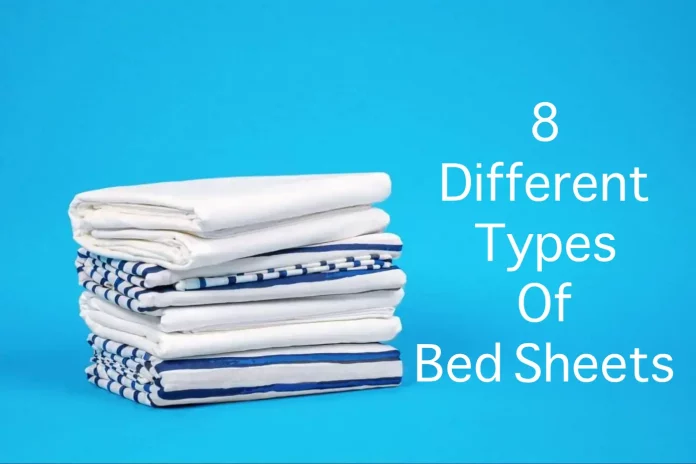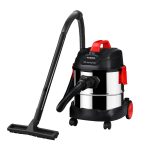Last Updated on April 7, 2024 by Nasir Hanif
The bed is arguably the most comforting place in our homes. Our beds provide us with a comfortable haven for relaxation and rejuvenation. The perfect bed is effective in providing a good night’s sleep so that we may wake up refreshed and energized!
Your bed sheets are instrumental in creating the ideal environment for sleep. There are different types of bed sheets in the market. There are a few parameters you should keep in mind when choosing what kind of bedsheet suits you best.
Staple length is an important characteristic of fabrics and plays a major role in determining their quality. The average length of a fiber is known as “staple length.” The staple length has a bearing on the yarn’s evenness and the luster of the eventual product. The staple length is grouped into short, medium, and long-staple. The longer staples are of premium quality and are priced well.
This article shall discuss the different factors that you should bear in mind while choosing a bed sheet the next time.
1. Cotton
Cotton is the most preferred fabric for bed sheets, probably because of the variety it offers. Cotton sheets can be quite cheap, easy to wash, and durable at the same time. However, they’re vulnerable to wrinkles, and you may need to wash them a few times before you get the perfect softness.
However, not all types of cotton sheets are similar to each other. Let’s read about the different kinds of cotton fibers so that you can choose your cotton bed sheet wisely.
Egyptian
Many consider Egyptian cotton the best fabric for sheets, thanks to its exceptional durability, lint-resistance, and smooth finish. It is composed of the highest quality—extra-long staple fibers—and is quite costly, which makes it unaffordable at times.
Pima or Supima
Pima or the trademarked name—”Supima”—is second only to Egyptian cotton in terms of quality and reputation. Like Egyptian cotton, it is also composed of long-staple fibers, and it is quite strong, durable, and gives you a surprisingly soft feel while not costing as much as its Egyptian counterpart.
Upland
Upland cotton comes after Egyptian and Pima. It is typically made of short-staple cotton and is more prevalent compared to other cotton types. Most of the tags that display “100% cotton” are probably made of upland cotton. It is quite durable and strong. However, it won’t be a smart pick if you are looking for a softer fabric, as it’s rather rough.
Flannel
Flannel cotton is produced after the cotton is shredded, and each of the yarns is individually shaved to give them a thick and wooly feel. Flannel bed sheets are made using the twill pattern type of weave that makes the bed sheets soft and malleable, making them useful for cold winter nights.
Jersey
Jersey cotton can be best pictured with the help of stretchy t-shirts. Though quite warm, it is not as warm as the flannel sheets. The pliability of the jersey sheets makes them useful for thicker mattresses. The downside of the cotton jersey is its tendency to lose shape and develop pills with usage.
2. Bamboo
Bamboo is an eco-friendly fabric material. They grow rapidly and are used in the manufacturing of a variety of household items beside bedsheets. The production of bamboo sheets includes the extraction of bamboo cellulose and subsequent weaving of the obtained fibers into bamboo rayon.
The resultant fabric is softer than linen or polyester. Aside from this, bamboo sheets are wrinkle-resistant, long-lasting, breathable, and are considered to be hypoallergenic.
3. Polyester
Polyester sheets are made from an artificial material known as polyester. It comes from a category of polymers. Stiffness and scratchiness are characteristic features of polyester. Usually, polyester is blended with fabrics such as cotton to create a smoother feel at low prices.
4. Linen
For quite some time, linens have been a synonym for bedsheets. However, linen is a special type of fabric material known for its breathability, strength, and comfort. Linen is derived from flax (which comes from the Linum plant). Linen, whether 100% pure or blended with cotton, provides superior airflow and dries really fast.
5. Tencel
Tencel is a brand of fabric that is derived from Eucalyptus trees. The eco-friendliness of Tencel makes it a favorite among nature lovers. It can turn out to be softer than cotton while requiring a lesser amount of water and other resources for processing. It’s resistant to wrinkles and also hypoallergenic in nature. However, Tencel bed sheets are not as breathable as cotton and, thus, tend to hold more heat than desired.
6. Silk
There is a myriad of benefits to silk bed sheets. The luxurious silk sheets come from a material originating from silkworms. It has a sensuous and soothing feeling to it. The superb luster and sheen make it perfect for a romantic setting. However, silk is quite delicate and tends to wear out with subsequent usage. Also, the higher price range of silk bed sheets makes people think twice before buying them.
7. Microfiber
Typically, microfiber is a blend of polyester and nylon. Microfibers are woven tightly, which gives you a softer feel and makes the fabric stronger at the same time. As far as cotton bed sheets are concerned, hot sleepers should keep away from them because the sheets tend to be less breathable and trap heat as well as moisture inside the fabric, which can make sleepers uncomfortable at night.
8. Satin
Satin sheets are preferable for those who tend to get chills at night and are looking for some warmth. The materials used in making satin are silk, rayon, or polyester, which make them shiny, velvety, and warmer. Satin, however, is delicate and is prone to pilling and other kinds of wear and tear.
Types of Weaves in Bed Sheets
The weave, along with the bedsheet materials and thread count, has a significant impact on the quality of the end product. The weave of the fabric refers to the way in which the strands of the fabric are interwoven. The description of the popular kind of weaves is below.
Percale
Percale bed sheets are made of cotton. They feature a plain weave—one yarn over, followed by one yarn under, producing a matte finish with a crispy feel. The sheets are basically lighter and breezy, which makes them suitable for hot sleepers or summer days.
Sateen
While sateen sheets can be confused with satin, they are, in fact, different from each other. Satin is a weave structure, while sateen is the end fabric. The satin weave structure comprises one yarn under and three yarns over the pattern.
They are resistant to wrinkles and give you a luxurious silky feel. They are not as durable as percale sheets and are a better option for cold sleepers or cooler environments.
Twill
The twill weave features a two-under and two-over pattern. It creates a special diagonal design. The thickness of the twill weave makes it resistant to wrinkles. It should be noted here that the twill weave makes the fabric more vulnerable to shrinkage than sateen. However, it’s quite affordable.
Dobby
Dobby fabric is produced by weaving a fabric with the help of a specialized loom. The weave is completed by raising and lowering the vertical threads one by one. This creates peculiar geometric patterns in the fabric (diamonds, dots, or squares). The bed sheet produced by the dobby weave is lighter and gives a cooler feel in the summer.
You may also like: Picking the right handles for the kitchen cabinets
Patterned
The patterned weave contains designs embedded into the bedsheet’s texture. Damask and brocade are the two popular types of patterned weaves. Patterned weaves are on the heavier side and give you a majestic, vintage feel. Bedsheets that feature a patterned weave tend to be expensive.
Bed Sheet Thread Count
Thread countis the measure of the number of threads present in a square inch of fabric. Both the horizontal and vertical threads are counted for thread count. For instance, 100 horizontal threads and 150 horizontal threads would give you a 250-thread count. Generally, in sheets, the thread count varies between 200 and 800.
How does thread count affect the quality of your bed sheet? Your bed sheet’s thread count can tell a lot about the density of the weave. A higher thread count produces a higher weave, which in turn means greater durability and smoothness for your bed sheet.
However, a higher thread count also means more thickness and less breathability for the fabric.
While there is no objective answer to the best thread count for sheets, as a higher thread count doesn’t guarantee a superior fabric (factors such as the material of the fabric also play a major role), the ideal range of thread count is between 250 and 350.
Ply
Ply is the number of threads used in making a single thread. Thus, one-ply sheets mean a single fiber, and two-ply sheets mean two. While the general sense associates higher fiber count with better quality, you should take this notion with a pinch of salt. Multiple-ply sheets often turn out to be coarser and more difficult to wear.
Bed Sheet Sizes
Basically, the dimensions of your mattress should determine what size of bed sheet you’ll need. Below is a list of the standard bed sizes, but the actual size may vary with mattresses.
Apart from this if you are interested to know more about The Best Soil For Your Raised Garden Bed then visit our Business category.


























